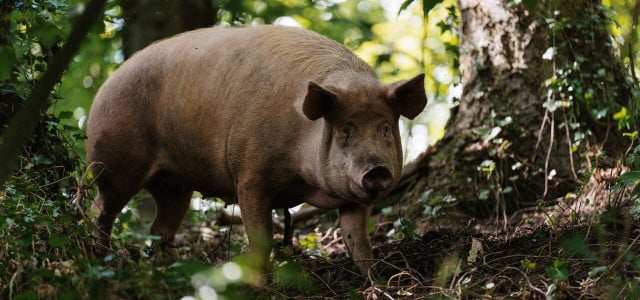While massive portions of biodiversity are lost every day, many invasive species in the US thrive. Read more to learn which ones might be lurking near you.
The US Department of Agriculture (USDA) defines an invasive species as being non-native and destructive to the ecosystem it occupies. Invasive species in the US and across the globe can wreak havoc on the environment, biodiversity, the economy and human well-being.
The USDA also warns that these life forms can threaten native species, biodiversity, ecosystem services, recreation, water resources, agricultural and forest production, cultural resources, economies and property values, public safety and infrastructure. So, they’re imperative to curtail when things get out of control.
Over 6,500 non-native, invasive species are now well-established in the US. Globalization has fueled the problem as trade and travel make a sneaky entry easy for many of these pests.
According to a study conducted by the US Forest Service;
- 39 percent of forest systems in the US are impacted by invasive plants.
- Forests in the east harbor more invasive species than the western regions. Hawaii’s forests have the highest invasion intensity (70 percent), while forests in Alaska (6 percent) and the Intermountain region (6 percent) have the lowest invasion intensity.
- Human land use may drive large-scale invasion.
- Over 741 million acres of forested land in the US have been invaded.
Some invasive species were brought deliberately, while others arrived without an invite. They come in many shapes, sizes and forms — from large animals to tiny insects. Let’s take a look at some of America’s most unwanted illegal pests.
Invasive Plant Species
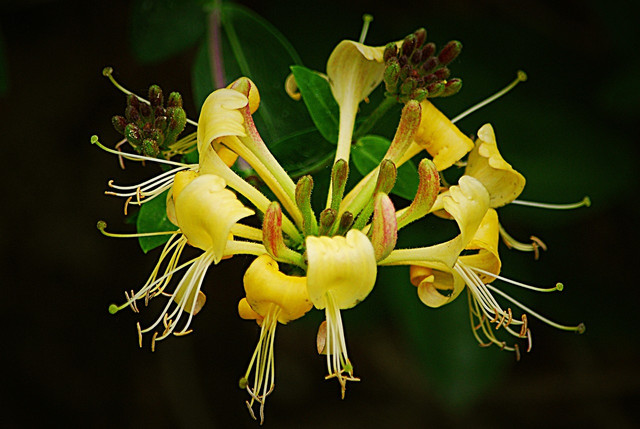
(Foto: CC0 / Pixabay / achieldeloof)
1. Japanese Honeysuckle
Japanese honeysuckle is an aggressive, climbing vine that competes with, shades and smothers native plants. This silent killer wraps around other plants and essentially strangles them by cutting off water and nutrient circulation.
Many birds eat the fruit of this plant, thereby spreading its seeds. As the plant expands, it endangers most shrubs and trees and, in turn, damages forest ecosystems.
Japanese Honeysuckle was first brought from East Asia to Long Island in 1806 for ornamental use and erosion control. It can now be found throughout the eastern US — from Maine to Florida — and west to Wisconsin and Texas, with some presence in the Southwest. It is one of the most invasive plant species in the US.
On the upside, it is attractive and smells delicious. This invasive species has also been used in areas like highways to control erosion and stabilize banks, as well as winter forage for deer.
2. Chinese Privet
Chinese Privet is the other most invasive plant species in the US alongside the Japanese Honey Suckle. It was introduced from China as an ornamental hedge. It also completes with and overwhelms native species, making it particularly insidious.
Chinese privet doesn’t just destroy native species and ecosystems — it opens riverbanks up to flooding and degradation as its root system is not as strong as the native species that would otherwise be growing in the regions.
This invasive species is used for hedges, mass plantings and as single specimens for its foliage and its spray of dainty white flowers, which make attractive additions to cut flower displays. It also carries antioxidant and other properties that make it a favorite ingredient in Chinese medicine.



(Foto: CC0 / Pixabay / DSt24)
3. Purple Loosestrife
Purple Loosestrife is one of the most invasive species in the US. It was introduced to American wetlands in the early 1800s for ornamental and medicinal uses — which included the treatment of dysentery, internal and external bleeding, wounds, sore throats, and ulcers.
It now occurs in every state except Florida and has also been growing invasively in Canada, Ethiopia, Australia, and New Zealand too. Purple loosestrife produces millions of seeds and threatens native plant species by crowding them out and competing for nutrients, water and sunlight.
When loosestrife displaces and eliminates native plants, it affects the ecosystems — including the habitats of animals and insects that depended on native species for food, shelter and survival. Duck, goose and muskrat populations have all seen declines since purple loosestrife was imported.
Their dense strands and underground stems — that can grow by up to 1 foot annually — can impair and influence water flow and add financial burdens as they are corrected.
It’s not all bad news though. This invasive species has beneficial effects in the management of diarrhea, chronic intestinal catarrh, hemorrhoids, eczema, varicose veins and bleeding gums.
4. Giant Hogweed
Giant Hogweed is listed as a Federal Noxious Weed under the Plant Protection Act. It is illegal to import or transport this invasive species between States without a permit. Contact with this massive — up to 14-feet — plant causes it to release sap that can cause a severe burn within 24 to 48 hours.
It is native to the Caucasus region of Eurasia and was brought to the US as an ornamental beauty transported to the United States and Canada as a showpiece, a spice, and as a favorite of beekeepers because of its huge flower head.
This invasive species is now abundant in New York, Connecticut, the District of Columbia, Illinois, Maine, Maryland, Massachusetts, Michigan, Ohio, Oregon, Pennsylvania, Washington, Wisconsin, Ontario and Vancouver Island in Canada.
This plant also competes with native plants and impacts native ecosystems. It is associated with soil erosion and little-to-no benefits. Academically reviewed research showed that in Europe too this invasive species significantly affected insects, aphids, ants, nematodes, fungi, soil microorganisms, plant communities, birds and many other components of the ecosystems.
Removing it can be difficult and may require specialist services in view of its toxicity.
5. Kudzu
Kudzu has been called “the vine that ate the South” because of its intense invasive capabilities. It is found throughout the southeastern US and is invading its way into the Midwest, Northeast and Oregon. The Asian native was introduced to our shores in the 1800s as an ornamental and for erosion control.
Research shows that this plant causes ecological damage, reduces biodiversity, and can have a variety of economic consequences, particularly a loss of timber value and volume. Once established, kudzu grows at a rate of one foot per day with mature vines as long as 100 feet — shading all in its path.
Other cultures have found great value in kudzu — including roots being used for medicinal purposes as early as 1578 in China. Fiber from vines and stems was also used to make cloth and paper. In the 1700s, the plant was exported to Japan, where the roots were ground into flour.
Like its cousins, Kudzu is also popular in Chinese medicine. The root has been used as a herbal medicine for the treatment of fever, acute dysentery, diarrhea, diabetes and cardiovascular diseases for over 2000 years. Over seventy phytochemicals have been identified in kudzu root, and studies have provided support for the traditional uses of kudzu root on cardiovascular, cerebrovascular and endocrine systems — including diabetes.
Invasive Insect Species in the US
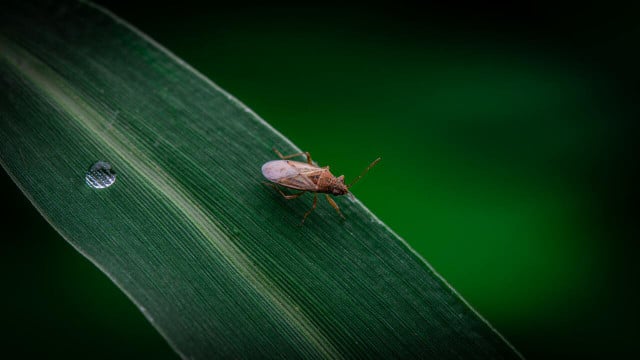


(Foto: CC0/ Unsplash/ Tao Yuan)
Our climate change-driven expansion of invasive insect species threatens to kill over 1 million trees over the next 30 years in urban America, according to the research published this year. The study also suggests that as much as 90 percent of all tree deaths will be caused by the emerald ash borer — which is predicted to kill almost all ash trees in more than 6,000 urban areas across the US.
6. Emerald Ash Borer
Emerald ash borer is an exotic beetle. It was recently discovered in southeastern Michigan — near Detroit — in the summer of this year. However, tree rings indicate the emerald ash borer arrived much earlier, approximately early to mid-1990s.
As of June 2022, the emerald ash bower is now resident in 36 states across the US. It has also invaded the Canadian provinces of Ontario, Quebec, New Brunswick, Nova Scotia and Manitoba.
This invasive species arrived accidentally in cargo from Asia and is native to Eastern Russia, Northern China, Japan and Korea. Adult beetles nibble on ash foliage and cause little damage. The larvae, however, feed on the inner bark and cause widespread disruption to the Ash by obstructing its transport systems for water and nutrients.
Because woodpeckers can find the otherwise invisible larvae deep in the tree bark, they are being used to help identify and manage infestations. The flourishing and rising populations of three species of woodpeckers and the white-breasted nuthatch are the good news story that accompanies this deadly invasive species in the US.
Since its discovery, Emerald ash borers have:
- Killed hundreds of millions of ash trees in North America.
- Caused regulatory agencies and the USDA to enforce quarantines and fines to prevent potentially infested ash trees, logs or hardwood firewood from moving out of areas where the beetle is known to occur.
- Cost municipalities, property owners, nursery operators and forest products industries hundreds of millions of dollars.
7. Brown Marmorated Stink Bug
The brown marmorated stink bug also managed to stay below the radar for years after its accidental arrival in the mid-1990s. The highest populations of this invasive insect species occur in the mid-Atlantic region — where they cause major destruction to crops — and also the economy. They have also been found in at least 38 states and the District of Columbia — where they are less problematic.
In 2010, mass infestation cost the Mid-Atlantic tree fruit economy 37 million dollars. Brown marmorated stink bugs often overwinter inside houses and release an unpleasant odor from scent glands on their abdomen when squashed or disturbed.
A small slither of good has been associated with these stinky invaders. Research has shown that these bugs directly increase the food resources available to native insects — which are important in the control of pests, the functioning of the ecosystem and the pollination of plants.
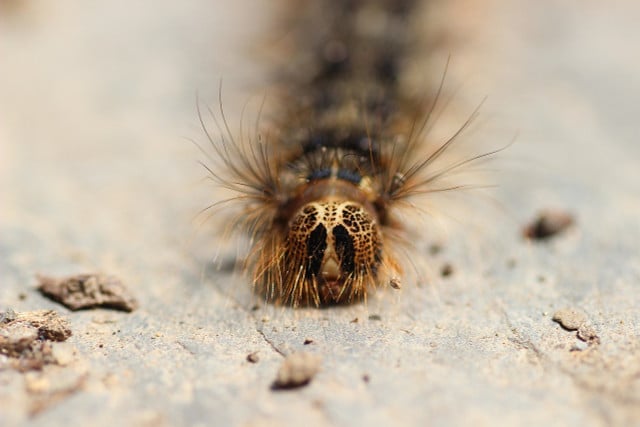


(Foto: CC0 / Pixabay / Leo_65)
8. Gypsy Moth
Gypsy moth caterpillars are one of the most invasive species in the US. In droves, they have devoured the foliage of, weakened and destroyed over 83 million acres — of 300 different species — of trees and shrubs since 1970.
The insect has actually been evolving on American territory since it was brought to Boston in 1869 from Europe. At the time, it was anticipated that the Gypsy Moth could be used to boost the silk industry. Instead, the moth escaped and began to flourish in the forests of Massachusetts. Since then, this invasive species has migrated to the New England states, North Carolina, and through portions of the Great Lake states and Canada.
Caterpillars negatively impact wildlife, timber production, recreation and the overall well-being of the forest they inhabit. Oak trees are their favored home. If the population expands and grows larger, they move on from trees to other vegetation such as valuable crops.
Recent outbreaks have been driven by climate change and subsequent drought. A lack of water inhibits the growth of fungi that would infect caterpillars of this highly invasive species. The only possible benefit gypsy moths could have would be if their host plant was an invasive species itself.
9. Kudzu Bug
We have already met the kudzu plant — the Asian invader. An example of the ideal, symbiotic feeding arrangement can be seen when we look at the Kudzu bug which also has also been calling the US home since its arrival in 2009. The kudzu bug is beneficial when it invades its favorite food source — the kudzu plant — as it does in its native Asia. Unfortunately though, it likes variety.
This invasive species of insect also chomps on soybean and other legumes. It has become problematic for farmers — particularly in Georgia and South Carolina. The good news is that this little pest has several natural enemies that have been attributed to the decline in kudzu bug outbreaks in recent years.
Most Invasive Aquatic Species in the US
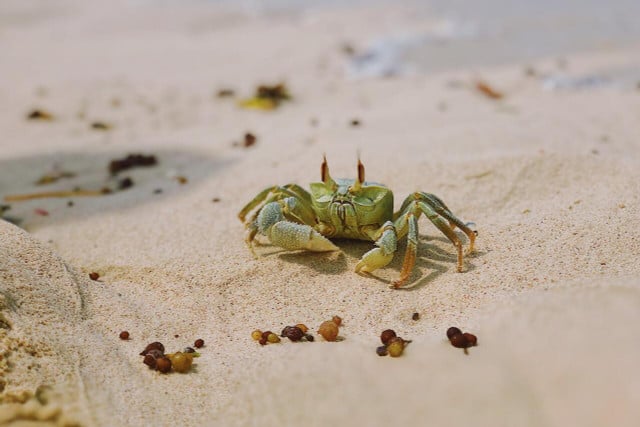


(Foto: CC0/ Unsplash/ Rafal Jedrzejek.)
When it comes to invasive species in the US — we can sometimes forget about the deep blue sea. However, we most certainly shouldn’t. Non-native species in the ocean often lack predators and thrive quickly — displacing locals as they do so. According to the EPA, invasive aquatic species:
- Have raised major environmental, economic and public health concerns
- Pose significant economic burdens
- Are considered the second greatest threat to biodiversity after habitat loss
- Are critical concern for environmental protection
No good can arise from the presence of these alien invasive species in the US.
10. Green Crab
Green crab was first introduced to North America in the 1800s — most likely on ships from its native Europe. According to NOAA, This crab is one of the most invasive species in the marine environment because it:
- Has few predators
- Aggressively hunts and eats its prey
- Destroys seagrass
- Outcompetes local species — including salmon and other crab species — for food and habitat
- Could inflict massive strain on Alaska’s multi-billion dollar fisheries industries
The green crab has already invaded South Africa, Brazil, Australia, and both coasts of North America — and has the potential to destroy native ecosystems. It feeds on many life forms — including clams, oysters, mussels, marine worms and small crustaceans. And to top it off — this invasive species is an intermediate host to a marine worm that can threaten local shorebirds.
11. Zebra Mussels
The zebra mussel arrived from Eurasia in 1988 and now resides in many freshwater lakes, rivers, and reservoirs. They have expanded their colonies throughout the Great Lakes region and into the large rivers of the eastern Mississippi drainage. They have also been reported in other regions — including Texas, Colorado, Utah, Nevada and California.
Zebra mussels are regarded as one of the most destructive invasive species in North America and can cause millions of dollars in damage by clogging drains and waterways. Mussels are filter feeders — meaning they consume algae and phytoplankton that are native to the water.
This filter feeding decreases food availability for zooplankton, increases water transparency, and leads to an accumulation of pseudofeces — which subsequently results in a foul environment. Their massive colonies overcrowd native mussel species too.
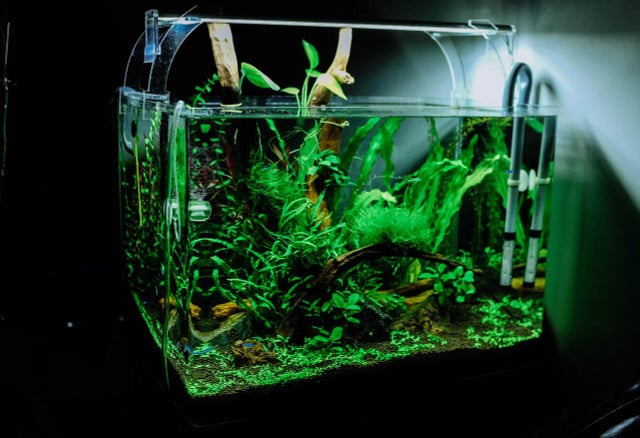


(Foto: CC0/ Unsplash/ Huy Phan.)
12. Hydrilla
Hydrilla — has brought chaos from its native Asia to every continent except Antarctica and arrived in the US as part of the aquarium trade. It first appeared wild in the Crystal River system of Florida in 1960 and is now reported throughout the US. It is not saltwater tolerant.
This invasive species disrupt water flow in reservoirs and obstruct drainage in irrigation canals. It also reduces the dissolved oxygen content of the water causing fish death. It also hinders water recreational activities — like boating and swimming — resulting in economic decline as well as native biodiversity.
13. Killer Algae
Killer algae — a species of green seaweed — lives up to its name and also entered US water through the aquarium trade from the Indian and Pacific Oceans. This invasive species was selectively bred for aquarium trading and is, therefore, exceptionally hardy.
Killer algae is tolerant of varying temperatures and light conditions. It can grow in depths of one-hundred meters under the water, can survive for up to ten days out of water, and can spread with just a single torn leaf.
The invasive species competes with and smothers other algal species, seagrasses and aquatic communities. It also contains noxious compounds in its foliage. Fish that eat killer algae ingest these toxins — which are toxic to them and also render them unsuitable for human consumption.
The plant is now federally regulated — having been successfully eradicated at considerable cost from California.
Invasive Animal Species
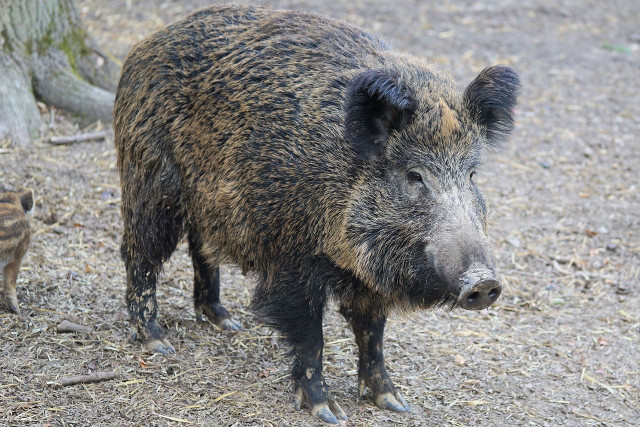


(Foto: CC0 / Pixabay / webandi)
Invasive animal species are abundant across the US. More than half of all our National Parks are overrun with invasive animal species — including vermin, pythons, and feral hogs. Invasive species in the US are regulated under the Lacey Act.
According to the USDA, invasive species threaten nearly 50 percent of endangered native species in the US. The alter habitat structures, shelter, food availability, and species interactions.
Regulatory laws — such as the Endangered Species Act — mandate that the potential effects on animal populations be evaluated before taking action to alter or restore habitats. Invasive animals come in many shapes and sizes — from mammals to reptiles and birds.
14. Feral Pigs
Today’s wild swine in the US are descendants of wild boar brought from Eurasia and Russia in the 1900s, and pigs brought by early explorers in the 1500s and earlier. It is estimated that between six and nine million invasive feral pigs cause more than $2.5 billion in agricultural damage every year in the US.
Feral swine have been reported in at least 35 states and their expansion has been attributed to factors that include their adaptability to a variety of climates and conditions, transport by humans, and a lack of natural predators.
They have been a particularly virulent problem throughout the south — especially in Texas. This invasive species eats and tramples crops, rips up recreational areas, occasionally attack tourists in state and national parks, squeezes out other wildlife, erodes soil, and uproots tree seedlings — contributing to deforestation.
Some light might shine at the end of the tunnel for this invasive species. Research from Malaysian rainforests have actually shown that feral swine might actually support biodiversity. In areas where pigs nested — measures of tree biodiversity increased more than 100 percent more than the areas without nests. Further investigation is required.
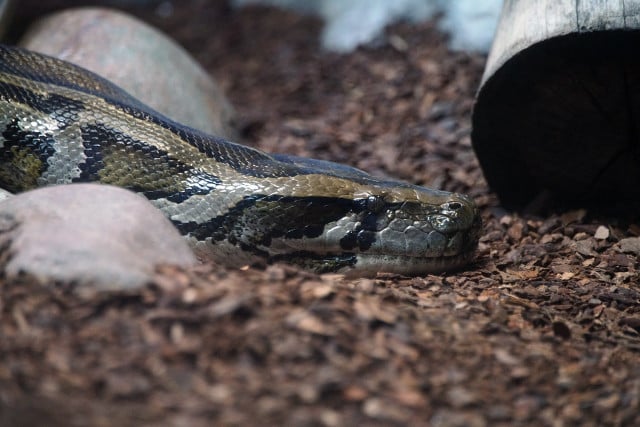


(Foto: CC0 / Pixabay / gayleenfroese2)
15. Burmese Pythons
Burmese pythons are native to Southeast Asia and are difficult to manage and cull. They are currently posing major problems in Florida and were originally imported as part of the pet trade. This invasive reptile is one of the most concerning invader in Everglades National Park.
These destructive pythons compete with native wildlife — including mammals, birds and other reptiles. Their establishment in the park directly correlates with its major declines in animal species between 1997-2012. They include:
- raccoon numbers dropping 99.3 percent
- opossums 98.9 percent
- bobcats 87.5 percent
- and marsh rabbits, cottontail rabbits, and foxes effectively disappearing
In 2009, a pet Burmese python broke out of its terrarium and tragically strangled a two-year-old little girl to death.
16. European Starlings
This flying invasive species was introduced to the US by a man called Eugene Schieffelin — who was a super-fan of William Shakespeare. They had been mentioned in the Shakespearian play Henry IV — which is why approximately 100 imported European starlings were unleashed into New York City’s Central Park in 1890.
Today, there are more than 200 million European starlings competing with native species in North America. They swarm agricultural feeding troughs, contaminate food and water, and are linked with diseases like histoplasmosis, a lung ailment afflicting agricultural workers. They also destroy crops — including grains and pitted fruits.
This invasive bird has a worldwide negative impact on the breeding performance of woodpeckers in particular — which will also impact South America. The European starling also costs the agricultural industry an estimated 800 million dollars annually. No benefits are associated with the presence of this or any of our invasive animal species on American territory.
Most Invasive Species in America Overall



(Foto: CC0 / Pixabay / 21967857)
When it comes to aggressive, destructive and catastrophic levels of invasive species — one in particular has wreaked havoc on every corner of the US and the globe. Mankind may be native to to the planet, but is the main cause of water pollution, thermal pollution, and plastic pollution in the ocean. Many of our human activities contribute to air pollution too.
Our human-environment interaction does not reflect a symbiotic relationship. As an invasive species, we kill 55 billion animals in the US alone every year. We consciously inflict all manner of experiments on many others in our animal testing practices.
Fortress conservation and many of our dietary choices — like sugar and cashews for example — result in human rights abuses, displacement of indigenous people, plants and animals, and massive losses of ecosystems and habitats.
Our climate change denial is just one more factor on an endless list of our behaviors that we struggle to address — without mentioning war, slavery, apartheid or any other dark moments of our past and present. The reality is that we are causing more chaos, destruction and invasion than every other invasive species in the US and on the earth combined.
Read more:
- Tropical Rainforest Ecosystems: Why Are They Important?
- Antinutrients: What Are They And Are They Dangerous?
- 11 Superfoods for Energy, but Also Sustainability
Do you like this post?






